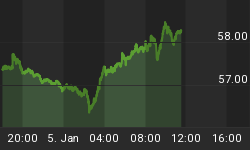One of the pitfalls on the way to profitably investing in the junior mining sector is the ever-present temptation to buy companies with great stories but with little substance behind the story, i.e., "story" or "concept stocks" as they're sometimes called.
You can always recognize such stocks by the glowing press releases that announce the company is on the verge of some great new find. "We believe we are sitting on a terrific ore body," or "gold is expected to be found soon." Yet the positive results and promising finds never seem to be forthcoming. Many marginal companies and start-ups with no earnings have managed to attract millions from investors without producing anything to justify it to their shareholders. That's why it's important to "buy the steak -- not the sizzle" as Jordan Kimmel of the Magnet Investment Group recently said.
Kimmel writes, "One of the problems these days is the desire for instant gratification. Time frames were reduced from three years to three months and then down to three days. Day trading and swing trading proponents (many of them trading desks and brokerage firms) did such a good job of marketing to the public...three days was too long and day trading took center stage. I still believe the secret is being early in a truly great company and being patience. It is here that the real compound growth of assets takes place."
When it comes to investing in small-caps, micro-caps and junior mines, patience is indeed a virtue for the accumulation of those big, savory profit "steaks" that every serious investor is looking for. It takes time for a worthwhile junior mine to add value and enrich its shareholders.
Kimmel continues, "Today's day traders could not care less about the story -- and sometimes do not even know what the company does. A simple cross over in moving averages is enough for many 'investors' today. That kind of trading is important and necessary for the liquidity of the market," he adds, but does little for the investor who wants the bigger gains that only come through smart stock selection and patiently waiting for the company's strengths to translate into profits.
He points out that it is is the true investors of the "buy and hold" persuasion that are most susceptible to the story or concept stocks. "If you are willing to put your capital at risk in the stock market and be one of those investors, you need to go beyond the great story and the vision of the company. You need to dig into the details."
In his book "Making Dollars with Pennies," R. Max Bowser explains why so many concept stocks fails. He observes, "Most are not successful. It's not that the ideas are goofy. Failure comes by improperly introducing the service or product to the market. Or the company runs out of capital. Or, there is a technical flaw in the concept."
Bowser further points out that story and concept stocks are often heavily promoted. But if the company's management lacks the know-how and sufficient capital or if (in the case of junior mines) the quality ore isn't there, it's just plain risky to invest in them.
"The analogy of 'the steak' over 'the sizzle' is interesting in that a good steak needs to be aged properly," continues Kimmel. "When you identify an extremely undervalued situation, by nature it is either under followed or under loved. Once you have taken your position -- you cannot believe everybody else has not come on board yet! As legendary trader Jesse Livermore ultimately said, 'It's being right and sitting tight.'"
Kimmel makes reference to the legendary Livermore's bottom-line conclusion from his years of trading experience. Livermore's famous statement was "It never was my thinking that made the big money for me. It was always my sitting. Got that? My sitting tight!" He added (in his "Reminiscences of a Stock Operator"), "That is about all I have learned -- to study general conditions, to take a position and stick to it. I can wait without a twinge of impatience. I can see a setback without being shaken, knowing that it is only temporary."
Kimmel makes an excellent recommendation for the investor who wants to separate the "sizzle" from the "steak" and make profitable picks. "By taking a few minutes to write down the reason you are buying the stock and how much you are willing to lose if the idea goes bad, you will not find yourself in 'stories from a friend of a friend.'"
He adds, "By utilizing a few screening processes, the universe of companies can be brought down to a manageable list to further investigate. Each investor must understand a company's balance sheet enough to create a simple screen that feels right for them. Each investor can then establish a set of criteria -- such as an acceptable level of revenue growth or even a number of consecutive annual dividend increases."
By narrowing down the best companies with the greatest potential for future growing using a disciplined screening approach, the patient investor will eventually be rewarded. As Kimmel puts it, "Put in the time and do the work and leave the sizzle for the other guy."
















